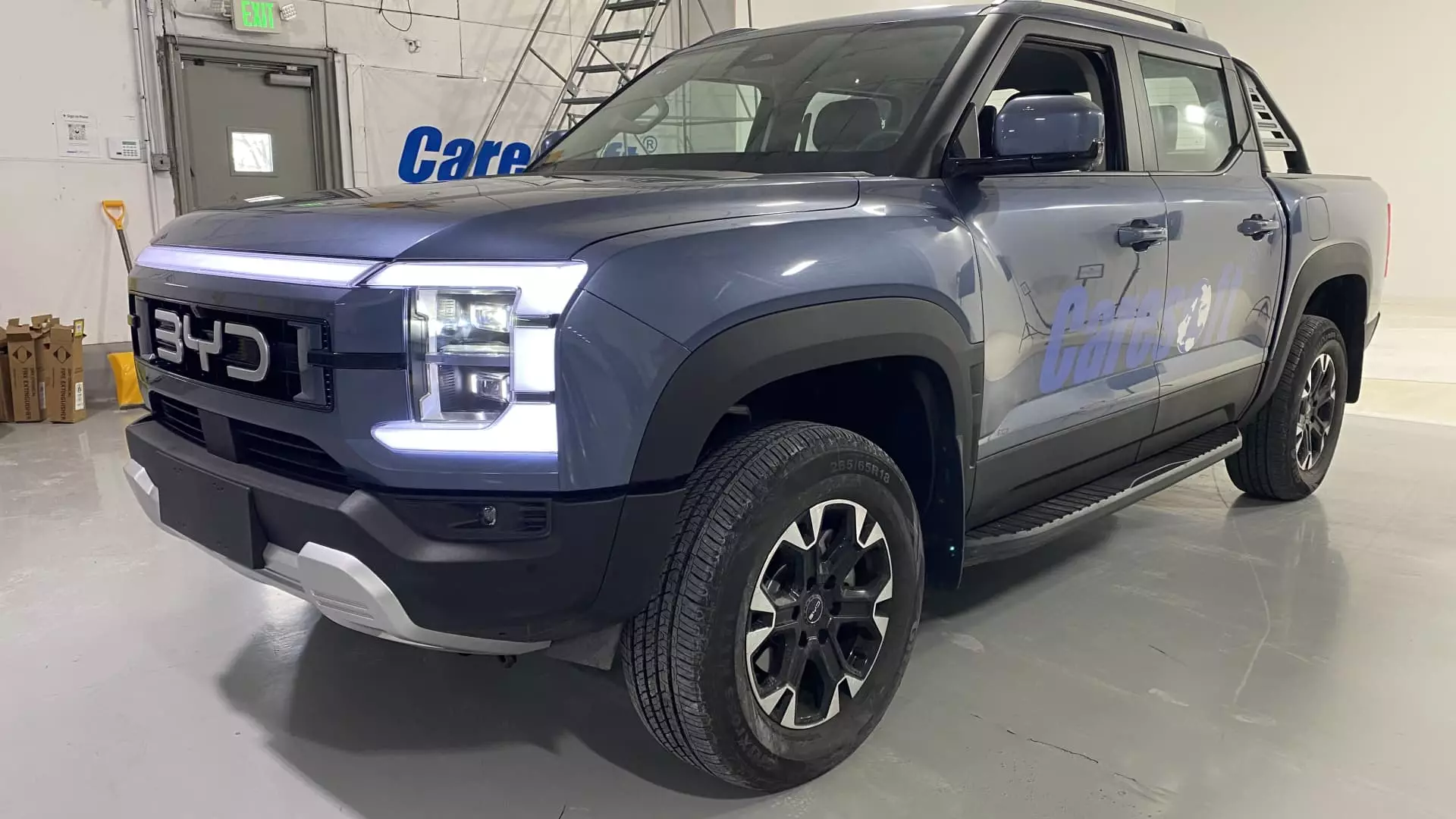The automotive industry in the United States, a longtime bastion of iconic brands like Ford, General Motors, and Toyota, is facing an unprecedented challenge. The emergence of Chinese automakers, particularly BYD Auto, is creating ripples in one of the most profitable segments of the market: pickup trucks. This article delves deeper into the BYD Shark, a new offering from the Chinese manufacturer that embodies the shifting dynamics and competitive challenges facing established players in the industry.
The BYD Shark is generating buzz not only for its name but also for its design, which closely resembles that of American-made vehicles, particularly those from Ford. A blend of the Ford Explorer and the revered F-150, the Shark goes beyond mere imitation; it suggests a strategic approach to appealing to a market that has high expectations for performance and aesthetics. Its look and feel could easily lead one to believe it hails from a Detroit assembly line, even though it is manufactured thousands of miles away in China.
Despite not officially entering the U.S. market yet, BYD has made significant strides in regions where Toyota and GM hold sway. Countries like Australia, Brazil, and Mexico are already welcoming the Shark, while speculation about future sales in the U.S. is driving concern among local automakers. For Ford, the stakes are particularly high, as the F-150 remains a cornerstone of its business model for nearly five decades. It is clear that if BYD positions itself to compete aggressively in the U.S. pickup market, established brands will need a robust response strategy.
Sales figures highlight the importance of the pickup truck segment in North America. These vehicles are not merely modes of transportation; they’re vital revenue generators for manufacturers. With pickup trucks making up a significant portion of annual sales, it’s no wonder that Ford and Toyota are particularly wary of a newcomer like BYD. Comments from industry leaders such as Terry Woychowski, formerly of GM, underscore the critical position trucks hold in each manufacturer’s portfolio.
In this context, the Shark’s arrival isn’t simply about introducing another vehicle; it’s about redefining market competition as Chinese manufacturers leverage technological advancement and aggressive pricing. For instance, the Shark, while costing approximately $44,000 in Mexico, remains significantly cheaper than hybrid or all-electric alternatives in the U.S., positioning it as an attractive option for budget-conscious consumers.
BYD’s broader strategy seems to be one of global integration. The company has rapidly scaled its exports, growing its market presence from 2% in 2022 to a projected 8% in 2024. With a steep increase in international vehicle sales from 3 million to approximately 4.3 million over the same period, analysts posit that BYD is harnessing a second source of growth beyond domestic sales, potentially constituting over 31% of incremental vehicle sales through 2030.
Their mid-size pickup, featuring a dual powertrain of an internal combustion engine and electric components, appeals to modern sensibilities while maintaining a nod to traditional performance metrics. While the truck’s niche market in the U.S. is smaller, the vehicle’s plug-in hybrid powertrain could draw interest, especially as consumers become increasingly eco-conscious yet unwilling to forgo the utility that pickup trucks offer.
Testing of the BYD Shark indicates that while the truck performs adequately, there is still room for refinement. Analysts have noted that the vehicle’s acceleration, while competent, fails to match the electrification prowess of competitors like Tesla’s Cybertruck. Additionally, ride comfort and handling still require enhancements as they do not meet the expectations set by U.S. standards. Nevertheless, aspects of its construction and design display a deliberate effort to learn from American manufacturers, imitating well-established features while attempting to innovate where possible.
The innovative application of battery technology, for example, which places components beneath seats, reflects an understanding of maximizing space—a feature that may simultaneously appeal and confound traditional truck users. Interior design flaws, such as bungee cords employed for the rear seat, signal that BYD is still in the process of refining its approach.
The BYD Shark is not just another pickup truck; it represents the seismic shift in the automotive landscape as Chinese automakers assert themselves globally. Faced with increasing competition from companies like BYD, established manufacturers must innovate, strategically reassess their market positions, and possibly rethink their development timelines. As the market dynamics continue to evolve, the stakes will be high, not just for automakers, but for consumers who stand to benefit from improved options and potentially lower prices. The arrival of the Shark might very well be just the beginning of a significant era in the automotive industry.

